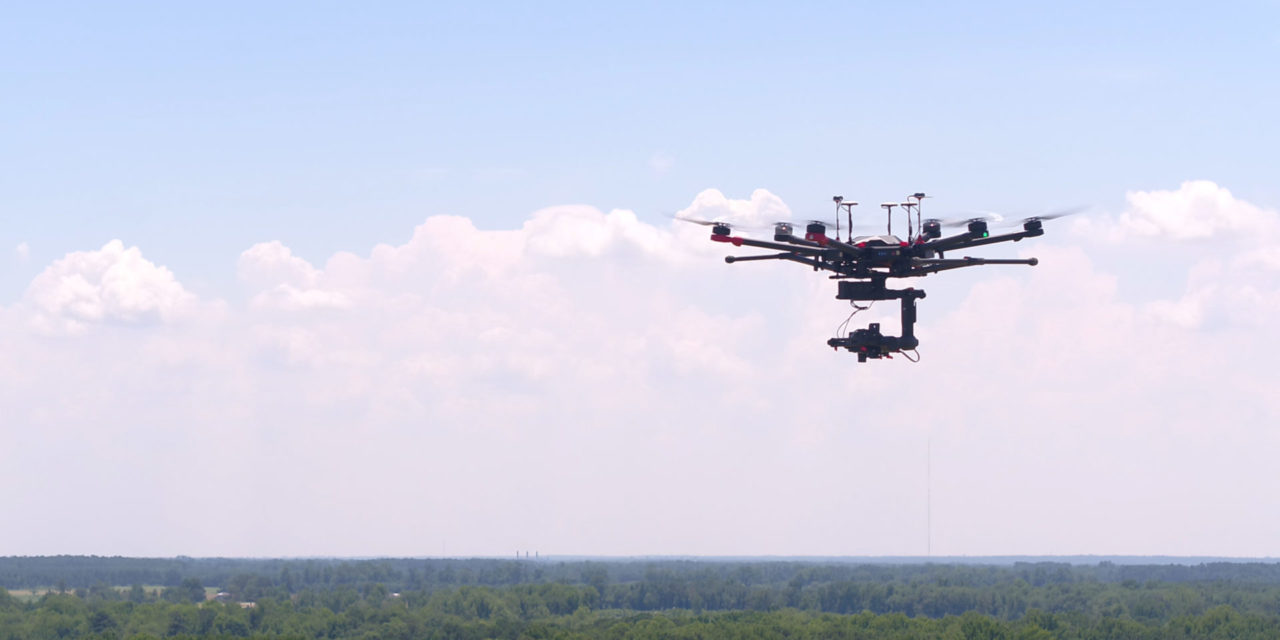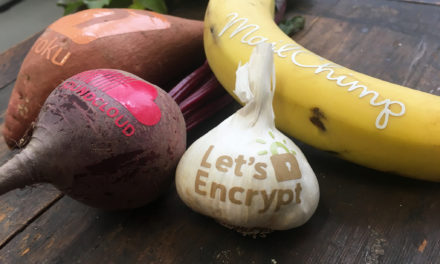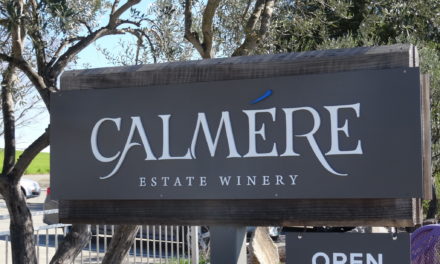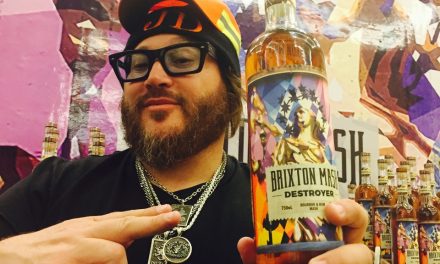While scouting locations in New York’s Upper Hudson Valley for a legacy farm distillery to produce premiere American brandies and eau de vie, Brett Mattingly, COO of Klocke Estate Holdings, LLC, knew technology would play an integral role in the new venture’s business planning and process. Mattingly, who possesses advanced engineering degrees, grew up on a family farm. “Harnessing the power of technology is a fundamental component of our strategy for both the distillery and vineyard,” he says. “It starts in the vineyard: To produce a superior product, we need to meet the triple challenges of skilled labor shortages, integrated pest management, and climate change.”
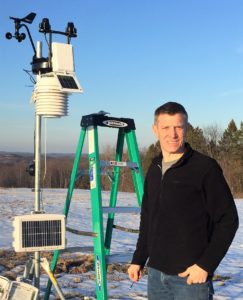
“Precision agriculture in specialty crops, such as winegrapes, is all about managing individual plants.” —Brett Mattingly, Klocke Estate Holdings, LLC
In advance of the company’s 2018 purchase of a 180-acre abandoned farm in Claverack, N.Y., Klocke’s founder, John Frishkopf, contacted Jim Meyers, cooperative extension viticulture specialist at Cornell University. “We wanted to measure and understand the microclimates, drainage potential, soil characteristics, and also the best methods of gathering NDVI [normalized difference vegetation index],” says Mattingly. Meyers initially flew a drone over the property to collect data that was used to create a 3D model site plan.
“We also met Cornell research scientists to learn about cutting edge vineyard management research being conducted at CLEREL [Lake Erie Research and Extension Laboratory] and the Efficient Vineyard Project. They recommended a platform called Ag Leader, which is a precision agriculture GPS navigation and machine control system with an integrated software called Spatial Management System.
“The Ag Leader system has two main components: tractor navigation and control, and analysis software. The software is used to analyze data and make decisions based on things like soil samples and yield from previous years. We’ll use that to decide, for example, the amount of nutrients to distribute on each section of the field. The ‘precision part’ is that different rates can be set for discreet sections of the vineyard based on data from previous years. Data is then used to create a prescription that gets uploaded to the tractor’s computer, which carries out orders,” he explains.
“Ag Leader was initially developed for row crops that are managed by the acre. We want to manage by the plant—precision agriculture in specialty crops, such as winegrapes, is all about managing individual plants. In the future, our tractors will be capturing images through the use of multispectral sensors. The system claims accuracy within an inch in three dimensions, and I’ll be able to assign those observations to a particular plant. My challenge now is to develop a platform that has maximum capabilities for autonomous operation. That’s the holy grail—a machine that does it without a human and better than a human. This is all years away, but that’s where we’re heading,” states Mattingly.
This all comes with a price tag however. Mattingly and partners spent $50,000 for the initial system that included that two GPS receivers, two computers, one Real Time Kinetic base station (supplying the most accurate GPS data), and cost for outfitting the tractors with modified hydraulics to allow computer-controlled steering. “The initial investment is steep and is difficult to justify for a small operation, [but] the ROI is based on savings from becoming more sustainable—reducing the amount of fertilizer and pesticides. The feedback I hear from other growers is that precision agriculture investments pay [for themselves] within two years.” Mattingly will begin planting vines in May and apple trees in November of this year.
Sensing the Future
Nowhere are advances in agricultural technology having a greater and more immediate impact than in viticulture, where historic vineyard management practices have relied on boots on the ground and visual inspection. Today, sensors are leading the vintech charge. Digital and multispectral agricultural sensors have been used by growers for years and continue to be widely used to collect and analyze data on plant growth phases and general crop heath. But future development lies in hyperspectral and integrated multi-modal sensing.
A recent sensor conference sponsored by the National Grape Research Alliance (NGRA) was titled, “A Science-Based Perspective for Enabling Precision Viticulture Practices.” A conference presenter was reported to say, “We’re not farmers anymore, we’re agricultural technologists.” In the end though, the role and impact that tech plays in grape growing is about efficiency—maximizing fruit quality and yields that free up labor for more productive tasks. To achieve these efficiencies, the question for most growers is not a matter of if, but what and how to adapt available sensor technology.

“I view my role as that of curator—assisting growers with identifying the best solutions for their vineyard.” —Dr. Kaitlin Gold, Cornell AgriTech
Dr. Kaitlin Gold, assistant professor of grape disease ecology and epidemiology, leads the Grape Sensing, Pathology, and Extension laboratory at Cornell AgriTech (GrapeSPEC), the only academic group worldwide entirely dedicated to the use of proximal and remote sensing for plant disease research. Gold explains that hyperspectral sensors have the capacity to be predictive and that new satellites, such as Planet CubeSats and NASA’s forthcoming Surface, Biology, and Geology hyperspectral satellite, will be able to integrate with high-quality ground sensors deployed on low altitude and proximal sensing platforms to aid growers in identifying diseases earlier than ever before.
“My lab is collaborating with the Cyber-Agricultural Intelligence and Robotics (CAIR) Lab at Cornell AgriTech, led by Dr. Yu Jiang, to develop augmented reality devices for use in digital scouting,” says Gold. “These devices will integrate with existing disease risk models and miniature weather stations placed in the vineyards to display things such as microclimate conditions and localized relative disease risk.
“The CAIR lab is building both the AR platform and an agricultural robot that, when a field scout looks at a vine, will display information about plant health.”
As for growers that are faced with the challenge of choosing the right tools with the volume of technology currently available, Gold says, “We’re past proof of concept. I view my role as that of curator—assisting growers with identifying the best solutions for their vineyard.”
The sentiment is reinforced by NGRA Director Donnell Brown: “The best resource for growers looking to adapt new technology for their operations is to work with their extension agents and network with other growers.”
Flying High
While unmanned aerial vehicles (UAVs, aka drones) have enjoyed widespread use in government and military sectors for more than two decades, authorization for their general agricultural only use began in 2015, providing entry for commercial companies that serve specialty crop growers. Projections for industry growth are bright. Global Market Insights forecasts the agricultural drone market will exceed $1 billion in the next few years. Adoption rates will depend on the continued awareness and education among farmers, technological advances in farming techniques, and increased automation due to shortages in skilled labor.
Based in Raleigh, N.C., PrecisionHawk provides drone and UAV remote sensing applications and data processing services in industries such as agriculture and energy. For its winery clients, offerings have included all phases of vineyard work, from early season pruning through vine suckering and debudding, vine training, and weed control, through monitoring plant vigor and health. Long-term maintenance tasks include trellis upkeep and identifying missing vine plants.
“Often, you have to prioritize which parcel you need to tend to first. Using drones for a quick bird’s eye view of your parcel, or collecting imagery for an orthomosaic [a large, map-quality image with high detail and resolution made by combining many smaller images] will help you assess where to allocate you manpower first to cover all your parcels in time,” says Madeline Fetterman, project manager at PrecisionHawk. Ultimately, says Fetterman, “Drone imagery can give you a global view of your parcels and help you choose where to prioritize your efforts.”
A global company providing end-to-end agriculture technology solutions is Minneapolis, Minn.-based Sentera Inc., which has developed, manufactured, and pioneered the use of drones, sensors, and data analytics tools for a variety of clients. Its products and tools are currently deployed by more than 70 vineyards across the United States.
Greg Emerick, co-founder and director new strategic partnerships, explains that smaller vineyards can adapt the technology for a minimal investment. “Drone [rotor] and a single NDVI/NDRE sensor for can be purchased for $4,000. We assist growers with the best hardware and sensor purchasing decisions based on what data the grower is looking to capture. Our analytics software indices within FieldAgent, our proprietary system, include NDVI, NDRE, NIR, and RGB.
“The indices and analytics features provide results displayed as a data driven map layer within FieldAgent’s mobile, web, and desktop applications and is shareable with clients and advisors even if they don’t have FieldAgent accounts. The foundation to Sentera’s success is its focus on providing immediate economic and agronomic value through real time actionable data. We see a 10-year horizon in helping reduce costs, improve production, and increase profits,” states Emerick.

